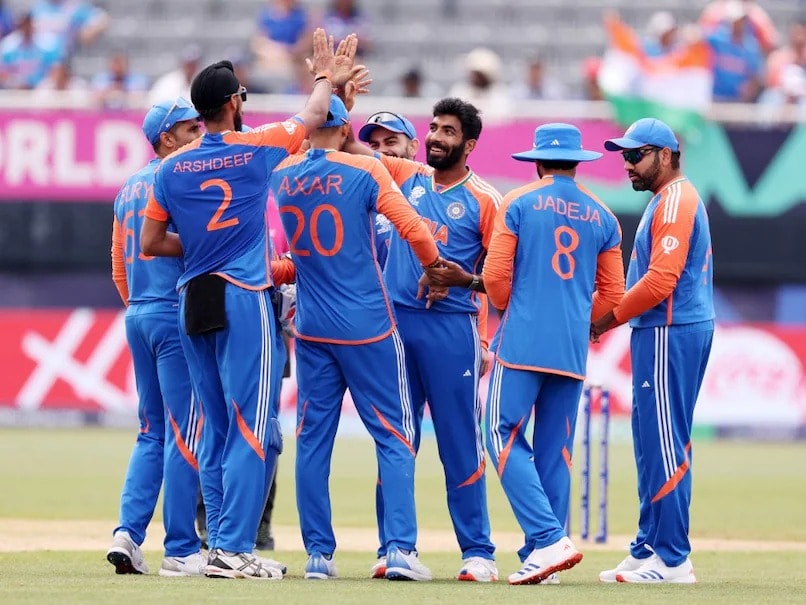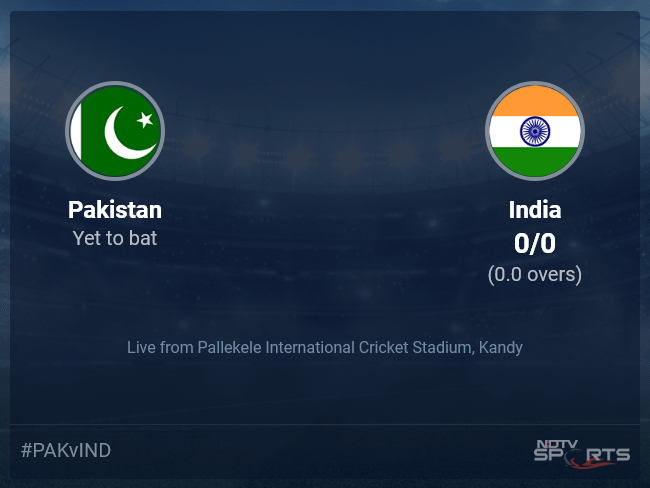In the first week of December last year, some six months before the start of the T20 World Cup in the Americas, Ravi Bishnoi scaled the summit, occupying the top spot in the ICC’s list of T20 International bowlers. At the time, it appeared as if the little leggie was a shoo-in for the World Cup squad to complement the left-arm wrist spin of Kuldeep Yadav.
Bishnoi played three games thereafter, at home against Afghanistan, but even though he clinched victory for India in the second Super Over of the final match of the series in Bengaluru — India’s last engagement before the World Cup — he lost his place to Yuzvendra Chahal. That had as much to do with the bucketful of wickets the more experienced and conventional senior leggie picked up for Rajasthan Royals in the first half of IPL 2024 as Bishnoi going slightly off the boil for Lucknow Super Giants.
With India certain to play only one wristie while plumping for the batting depth that left-arm spinning all-rounders Ravindra Jadeja and Axar Patel offered, the nod went to Chahal’s experience ahead of Bishnoi’s exuberance as insurance for any injury that might rule Kuldeep out. While it must have been heart-breaking for the 23-year-old, it merely served to reiterate the depth in Indian cricket and provide a window to the resources at the disposal of Rohit Sharma, Rahul Dravid and Ajit Agarkar’s selection panel.
Like at the 2022 T20 World Cup in Australia, Chahal returned home from the United States and the Caribbean without playing a single game, though he did have the great distinction of wearing a World Cup winner’s medal around his neck. In a clear-cut indication that the planning for the future has already started, Bishnoi was promptly brought back for the T20I series in Zimbabwe, a move that has paid handsome dividends with the younger leg-spinner beautifully fusing economy with penetration.
Unique proposition
Unlike Chahal, who is a master of the game that relies on the conventional — his stock delivery is the looping leg-break to the right-hander that, when it comes out of the hand perfectly, drifts into the batter and breaks away wickedly on pitching — Bishnoi is a unique proposition in the sense that his principal weapon is the ball that turns into the right-hander. Bishnoi is more of a googly bowler than a leg-spinner and that wouldn’t be a secret even if there were no access to data and elaborate video footage. Batters know what to expect from Bishnoi, nine times out of ten. That he has been able to hold his own despite that knowledge is again proof of the truism that to know what one is confronted with is one thing, to be able to negotiate it with dexterity, confidence and authority is another cup of tea altogether.
Masterfully deceptive
Bishnoi is a bundle of energy as he comes into bowl, short quick strides combining with a quick, whippy action to make him appear all arms. The fast arm-action often confuses batters into thinking that the ball will arrive a lot quicker than it actually does, though it can’t be denied that the diminutive fella is quicker through the air than, say, Chahal or Kuldeep. He is adept at changing up angles and pace and therefore shies away from being predictable at a micro level even if his over-reliance on the googly lends a macro-level touch of similarity to his bowling. There was a time when batters around the world tried to play Anil Kumble like an inswing bowler, much to their detriment. If, today, batters believe that Bishnoi is only an exponent of the googly, they have another thing coming.
Bishnoi is an out and out wicket-taker who isn’t great at playing a defensive role, which isn’t something captains expect of their wrist-spinners in any case. For holding jobs and control, their eyes will flit towards finger spinners, left-arm and right. Bishnoi, Kuldeep, Chahal and their ilk are attacking weapons who can provide the cutting edge in the middle overs that can easily lop 20 runs off the batting side’s tally, a monumental figure in the modern T20 landscape.
For a wrist-spinner, it is essential that the harnessing of skills is accompanied by a thickening of the skin, the biggening of the heart. The slightest indiscretion in length or direction is an open invitation to attack-minded batters buttressed with excellent pieces of willow and smallish boundaries to bring their power-game into the mix. It needs no repeating that of all the various forms of bowling, nothing challenges its practitioner more than wrist-spin. Bowlers who pursue this craft rely heavily on support and empathy from their captains, and Bishnoi has been lucky that in Rohit, Hardik Pandya, Suryakumar Yadav and Shubman Gill, among others, at the international level and in KL Rahul at his franchise, he has been encouraged to stick to his attacking self even if it is at the expense of a few extra runs.
Bishnoi’s ability to think quickly and stick to his conviction were never more obvious than in Bengaluru in January when Afghanistan needed 12 in the second Super Over for their first T20I win ever against India. Despite the small Chinnaswamy Stadium outfield, Bishnoi backed his skills, tossing the ball up, getting it to dip and turn and dismissing right-handers Mohammad Nabi and Rahmanullah Gurbaz inside three deliveries while conceding just one run. Both holed out to long-off as they were forced to reach for the ball outside off that turned away on pitching and therefore put their timing off kilter. With those two deliveries under pressure, Bishnoi also displayed his versatility; he wasn’t just a googly specialist, he could also get the ball to turn away from the right-hander substantially.
In Zimbabwe, Bishnoi has been a huge asset for Gill, standing in as captain with Rohit retired from T20Is and Pandya rested after his heroics at the World Cup. In the first match, where India slumped to a shock loss after failing to chase down 116 for victory, Bishnoi was at his stunning best. Ninety-nine times out of hundred, his extraordinary spell of 4-2-13-4 would have been enough to fetch him the Player of the Match award and his team a convincing victory. This was the one that got away, India’s batters faring poorly and seized by residual rust after more than a month of inactivity to be bowled out for 102.
That didn’t take any sheen off Bishnoi’s magic. Like always, the wrong ’un was his trusted ally, accounting for all four wickets, three of them bowled and the other trapped leg-before. When Bishnoi falls into a rhythm and begins to attack and harry and hustle batters, he almost doesn’t need any support in taking wickets because he zeroes in on the stumps all the time, threatening either the pads or the furniture behind the batter. The slightest hesitancy culminates in the death rattle, a mode of dismissal Bishnoi has come to enjoy in his fledgling career.
Bishnoi has been one of the architects of India’s come-from-behind series triumph and can realistically expect a longer run going forward. For the time being, he will remain a white-ball specialist when it comes to international cricket, and there are quite a few significant limited-overs tournaments on the anvil, not least the 50-over Champions Trophy early next year (to be hosted by, if not in, Pakistan) and the T20 World Cup in India in 2026. Unless things go horribly wrongly in that period, Bishnoi can realistically expect to be one of India’s bowling spearheads, in the shortest format to start with and potentially in ODIs going forward.
Multiple strings to his bow
Of course, it helps that he is a rarity in Indian cricket, a leg-spinner that is also an electric fielder and an unbelievable catcher. Bishnoi boasts several stunning running catches in the outfield in the IPL, but in Zimbabwe, he has showcased a penchant for the out-of-the-world in the circle too. He is speedy across the turf and, for a small man, has a powerful, accurate arm. All of this mean he has two excellent strings to his bow; if he can use the time ahead of him to brush up on his batting skills too, he will make himself an indispensable member of the white-ball set-ups – at least to the extent that he can control – over the next few months when Pandya and Rohit are expected to helm the 20- and 50-over sides respectively under new head coach Gautam Gambhir.
Gambhir’s presence at the helm of affairs will be particularly reassuring for Bishnoi. During IPL 2022 and 2023, the recently appointed India coach was the mentor of Lucknow Super Giants, and it was during that phase that Bishnoi reasserted himself as a potent force. In IPL 2023, he picked up 16 wickets to make an international comeback in August after being surplus to requirement for 11 months since September 2022.
Gambhir won’t necessarily back Bishnoi because of familiarity, but because he knows what the young man has to offer. With age on his side and the memory of having been the No. 1 T20I bowler too recent for his on-off international appearances to not sting, Bishnoi is perfectly placed to make the step up to white-ball permanency, or at least in the 20-over format. The stage is set optimally; it’s now up to Bishnoi to use it as his grand canvas.
















